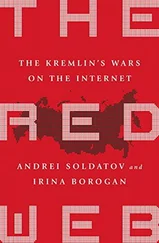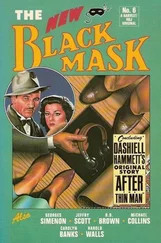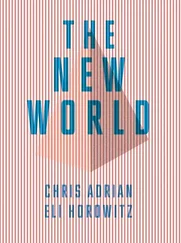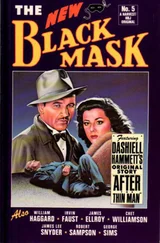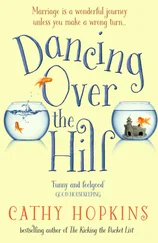But first, regarding this whole problem of art nouveau, I must read you a poem to give you an idea of what it really means. Let me say at once that if you take this poem in a naïve literary way – it is a poem by Dehmel 16– then you will all chuckle about it. In order to avoid a false idea of how fruitful it is, just try not to chuckle, and try to feel what lies in the complementary colours juxtaposed in the poem, for example, and then you will immediately understand how Schoenberg arrived at certain harmonic colours that would later become incredibly significant. So, the poem is called ‘Erwartung’ [Expectation], the composition is op. 2, no. 1. It reads as follows:
From the sea-green pond
near the red villa
beneath the dead oak
the moon is shining.
Where her dark image
gleams through the water,
a man stands, and draws
a ring from his hand.
Three opals glimmer;
among the pale stones
float red and green sparks
and sink.
And he kisses her,
and his eyes gleam
like the sea-green depths:
a window opens.
From the red villa
near the dead oak,
a woman’s pale hand
waves to him. 17
Now, this contrasting of unrelated complementary colours – ‘sea-green’, ‘red villa’, ‘moon’ – first of all demands of Schoenberg an entirely new harmonic colour, and this harmonic colour is a particular chord. It is this chord that will now concern us, and not only the chord itself but also its relationship to the whole. I will give you an idea of the song; you must excuse my squawking, but we are among musicians, and musicians generally – thank God – tend not to place great value on the beauty of the voice [plays ‘Erwartung’ [Expectation], Four Songs, op. 2, no. 1]. So, let me first show you the chord that appears here. It is this passing chord [plays]. The strange thing is that it is not this one [plays], but rather that it gains a much harder edge because the D, this dissonance [plays], appears instead of the expected E flat. And this chord runs through the song at every critical point – later in a lower register, like this [plays]. Now, you would all say that this chord comes primarily from Wagner. And Wagner very often uses similar passing chords as a form of harmonic seal, for example in the Ring . And I think this is probably the immediate model: the warning cry of the Rhinemaidens to Siegfried – which goes like this [plays] – which is just as sharply dissonant. Nonetheless, I would say that the character of this chord [plays] is quite different from this chord [plays]. This is for the following reason – and this brings us into contact with a purely harmonic and an expressive element: the Wagnerian chord is a ninth chord, a special kind of ninth chord that, if you want to express it harmonically, not simply as a suspension – but Schoenberg himself avoided the concept of non-harmonic notes as far as possible, and rightfully so, and instead tried to derive the notes of chords from the harmonic structure, which I think is the only correct principle for a composition that does not work with substitutes, where harmonic events stand for themselves; so, the Wagnerian chord, crudely speaking, consists of stacked thirds. Like this: [plays]. Here there are five notes: four at first, stacked in intervals of a minor third, and then the last one a major third above. That is not the case in Schoenberg’s chord, which already makes its connection to triadic harmony much more difficult. Of course, you can always hear it as an alteration [plays], that is, an alteration of the six-five chord. But first you have to keep to the phenomenon when you listen, to what is actually there, which is this [plays], and there you will find that a single third appears in this entire chord [plays], while elsewhere the chord has either an augmented fourth [plays] or a perfect fourth [plays] or then […] here likewise a perfect fourth. In other words, the chord is in reality already a quartal chord, and is most simply explained [plays a chord consisting of perfect fourths] as an upward alteration of this quartal chord. So it does not, in the form that appears here, tend towards a triad in the same way. And that is why it has something far more foreign, why it breaks out of the tonal schema far more than these Wagnerian seventh chords with added ninths.
Now, I told you about this peculiar art nouveau phenomenon in Schoenberg, which consists in constantly trying to draw everything into the music’s formal immanence. He still did this in a relatively simple way here by always resolving the chord in the same way, following the same principle, and it runs through the entire song – but then, at a very conspicuous point, appears in a lower register and takes on a certain kind of independence in this low register. I will play the entire song once for you. But I would like to draw your attention to a further aspect; there is no sense in playing it to you so often, otherwise we will lose time, and so I would like you to keep in mind a few things I will tell you, and then realize them when I play you the whole song. There is one part here [plays op. 2, no. 1]. This is a very important element in the entire history of Schoenberg’s music. This is the element of – well, one might almost say, an irregular, an irrational gesture. There is a sudden flaring up, an urgent motion in which a sudden tension is announced and smashes through the whole musical fabric for a moment. This element of a sudden interruptive gesture remained incredibly important for the sense in Schoenberg’s later music. When you have this passage in op. 19, for example [plays the first of Six Little Piano Pieces , op. 19], then this [plays] is essentially the same as this [plays ‘Erwartung’]. And only if you feel that here – I would almost say that the shock is held in the collision of these two unrelated colours – will you feel how much is contained in such twists in Schoenberg’s music. But one must ask oneself whether, if a musical event does not justify itself in the way I hope I have now shown you, where the event is justified by this ‘Ha!’, this sudden, abrupt action, whether musical elements have any validity if they do not fulfil such a function. So that is the question I would like to raise here. And now I will show you how Schoenberg follows on from this chord [plays]. Second verse [plays]. Now this is taken up as a remainder [plays]. […] I told you that – and I truly want to help you understand something with this song – I told you that, from the start, Schoenberg felt the need to create a sort of homogeneity between the formal structure and the individual event. In other words, he does not leave it at this one chord – as Richard Strauss would, incorporating countless sounds of this kind ten years later in Salome and Elektra , but using them only for colouristic effect without any bearing on the overall construction – but rather forms a middle section from this chord and its resolution. Yet there is still something mechanical about this element here. That is, the chord is simply transposed by one third after another and resolved in exactly the same way each time. And now you can see how the forces in such a work act against one another. I was once attacked most viciously when, with reference to Wagner, I dared to say that a work of art is not a being but a force field. I think that when one looks closely at such a song, one can recognize quite precisely how it should be understood. That is, on the one hand, Schoenberg has the justified need not to leave the chord as an isolated colour but, rather, to develop the form from it, to embed it. On the other hand, it is not adequate as a means of creating form because such a chord draws its power precisely from its uniqueness; because such a chord itself, I would almost say, has something unrepeatable, and because the excitement, this sudden flash that I just showed you in that shock gesture, cannot really be repeated. I said to you at the start, in an entirely different context, that shudders cannot be conserved. Well, that also applies to this composition: one cannot conserve the shudder that was really the purpose of this chord by constantly repeating it, and, at the same time, it must have consequences for the composition. This means that, within the composition, one really finds a collision between two forces that are not yet truly resolved within the composition, and the work – I mean the inner work of the composer – is now to resolve these forces.
Читать дальше

